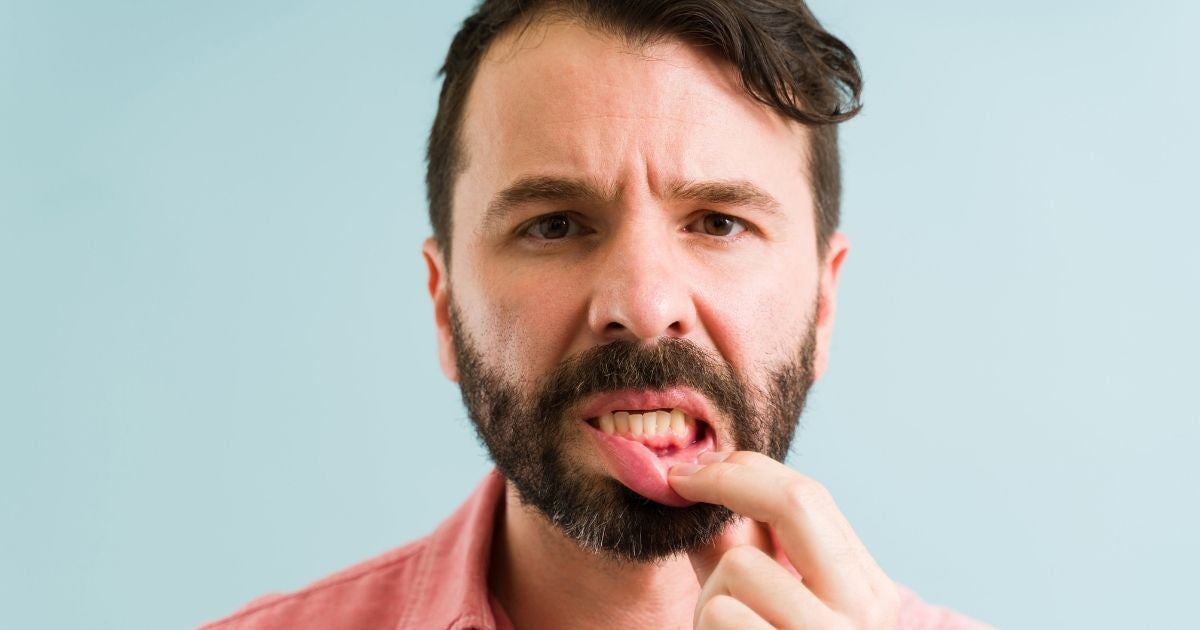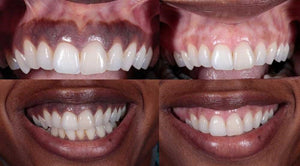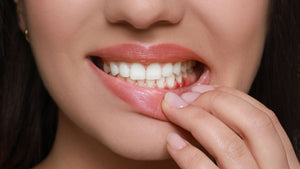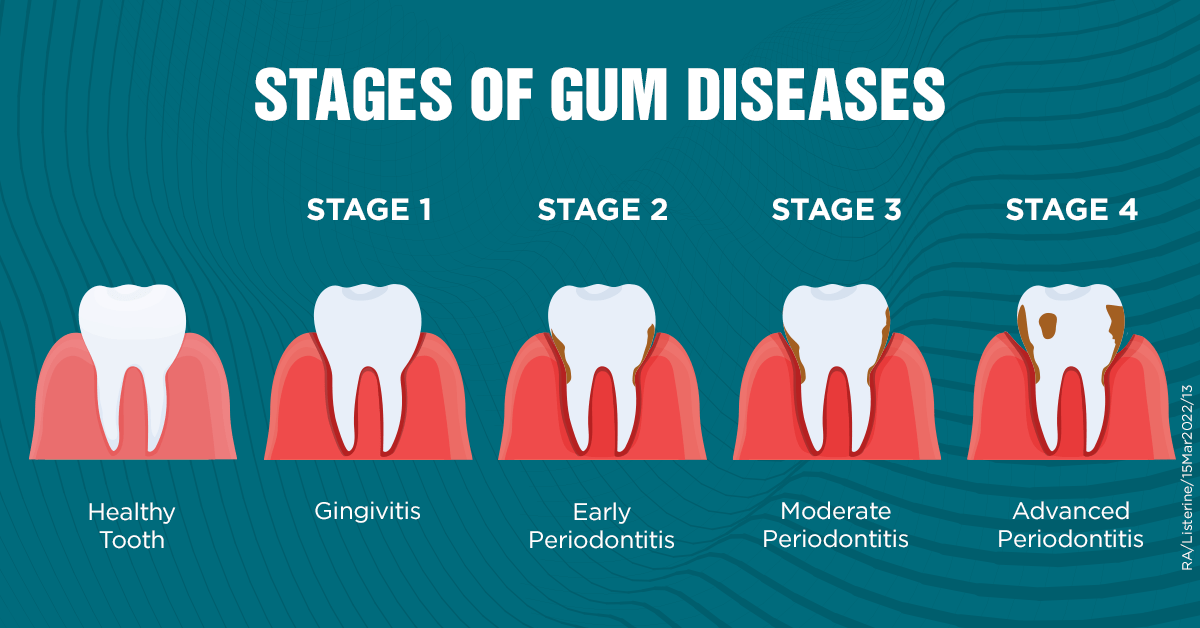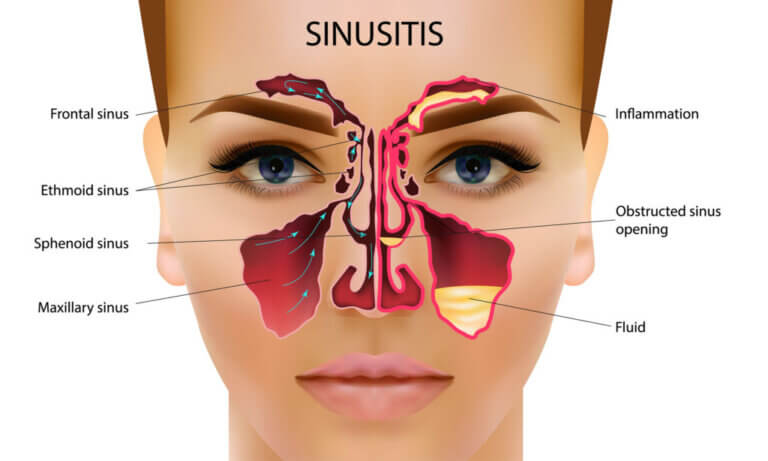Gum disease is one of the most common oral health problems in the world and it affects a rough percentage of 47.2 of the adult population aged 30 and above. However, regardless of how common this condition is, a lot of individuals are still not aware of the first alarm signs that might help to avoid more severe effects.
Knowing “what does early gingivitis look like” is very important so that you can keep up optimal oral health, and avoid the progression to turn into a more severe disease, called the periodontal disease.
Early gingivitis is the first phase of gum disease which involves swelling of the gums caused by bacteria accumulation on the gumline.
Early gingivitis can be fully treated with early care and treatment, unlike advanced forms of periodontal disease. Hence, you must learn the early symptoms of the condition before they turn into more severe illnesses that would result in the loss of teeth and other problems.
Let’s take a look at both visual and physical signs that signal the beginning of gingivitis, so you can detect possible issues before they need serious treatment.
Gingivitis: The Foundation of Gum Health
The mildest kind is gingivitis, which involves inflamed gums only, the underlying bone or connective tissue that supports the teeth in place are not damaged.
This difference is important as it draws a boundary between gingivitis and its progressed form, periodontitis, where the protecting mechanism of the teeth is usually damaged permanently.
The development of healthy gums to gingivitis occurs in a predictable fashion. Healthy gums should look pink, fit tight around every tooth and feel firm.
When you brush and floss normally, they should not bleed and retain a stippled appearance that resembles an orange peel. However, the buildup of bacteria plaque along the gumline causes an immune response aimed at combating the infection.
This inflammatory reaction is in fact the natural defense mechanism of your body. Nevertheless, in case the irritation caused by the bacteria continues, this inflammation becomes chronic - forming all the characteristic manifestations of gingivitis.
The good news is that since gingivitis has not yet resulted in damage to the deeper structures that hold your teeth in, it can be easily reversed by means of appropriate treatment and better oral hygiene measures.
This progression is important to understand why early detection is of great importance. After the gingivitis transforms into periodontitis, the harm cannot be reversed, so prevention and timely treatment is your only ally in the fight against dangerous malfunctions of the oral health.
What Does Early Gingivitis Look Like: Visual Signs to Watch For
Color Changes Along the Gumline
The first step in identifying “what does early gingivitis look like” is detecting a change in the color of gums. When the gums are healthy, they appear to be light pink; however, with the beginning of gingivitis, they become reddish, particularly at the gumline where the plaque may easily deposit. This strip of redness is in contrast with the less diseased tissue above and marks the onset of inflammation.

Texture Becomes Smooth and Shiny
Normal gums are stippled (orange peel-like) in texture and firm. In early gingivitis, this texture softens and appears shiny. The alteration is due to a slight swelling occurring because of inflammatory disorders, which lengthen the surface of the gum and removes the natural feel.
Puffy Gums and Swelling in Specific Areas
The other early visual sign is swelling. The gums tend to have a more swollen appearance, although this might not be obvious, and be more pronounced in the triangular spaces between the teeth referred to as interdental papillae. Such points usually become rounded and swollen-which is one of the first noticeable effects of gum irritation.
Gum Margins Start to Look Rolled or Loose
The gum margin that is the edge at which the gum borders your teeth, also changes. To be more precise, the edge is rolled or rounded, instead of being closely hugging each tooth, owing to its being in an early state of gingivitis. These minor contour changes may develop tiny pools, which facilitate the accumulation of bacteria to facilitate the exacerbation of inflammation.
Patchy Appearance Instead of Uniform Changes
The unique aspect about early gingivitis is that it never covers the whole mouth, uniformly. One can spot redness, swelling, and changes in texture in isolated areas. But, the rest of the gums seem healthy. This lumpy or stripy pattern would assist in distinguishing between a relatively early stage of gum disease and other oral problems.
The Physical Sensations: How Early Gingivitis Feels
Bleeding During Brushing or Flossing
Bleeding during brushing or flossing is one of the most obvious and distinct physical manifestations of gingivitis and one of the first physical signals that call attention to gingivitis' existence. Healthy gums do not bleed, though this fact is easily dismissed as something that is normal. Any bit of blood such as pink saliva, red traces on your toothbrush, or blood on floss is a sign of inflammation that you cannot overlook.
Fragile Gum Tissue
This bleeding occurs due to the fact that inflamed gum tissue becomes more sensitive and easier to hurt as well. At an initial stage, the pain in the gums is not felt, and it is quite easy to miss another major signal. However, when your gums bleed easily when you undergo your normal hygiene routine, it is a pointer that early gingivitis is setting in.
Tenderness or Sensitivity
The other physical symptom to look out for is tenderness in the gums. This may be experienced as tenderness to brush your teeth or to chew your food. The tenderness tends to gradually increase with time and may initially be experienced as slight discomfort before escalating in the event the condition is untreated. The pain usually becomes a dull ache instead of a sharp pain, or stabbing pain.
Throbbing or Pulsing Gums
Some people experience a slight throbbing or pulsing in their gums, especially after meals or during temperature changes. This happens because the blood vessels in inflamed gum tissue become more active. Hot drinks or cold snacks can amplify this sensation, making the discomfort more noticeable.
A Feeling of Puffiness or Fullness
Swollen gums don’t just look different; they feel different too. Many people describe their gums as feeling “puffy,” “thick,” or oddly full. This is especially noticeable in the morning after lying down all night, when fluid collects more easily in inflamed tissues. That sensation of tightness in the gums is a strong indicator something is off.
Stages of Gingivitis Progression
Understanding the progression of gingivitis helps identify where you might be in the disease process and what to expect if the condition goes untreated. The following table illustrates the typical stages of gingivitis development:
|
Stage |
Visual Appearance |
Symptoms |
Timeline |
|
Healthy Gums |
Pink, firm, stippled texture |
No bleeding, no discomfort |
Baseline |
|
Early Gingivitis |
Slight redness along gumline |
Occasional bleeding during brushing |
2-4 weeks |
|
Moderate Gingivitis |
Red, swollen, smooth texture |
Regular bleeding, mild tenderness |
1-2 months |
|
Severe Gingivitis |
Deep red, puffy, glossy appearance |
Constant bleeding, pain, bad breath |
2+ months |
Your healthy gums will succumb to early gingivitis within 2-4 weeks if you are following poor oral hygiene. At this early stage, the adjustments are small and can hardly be noticed unless one is keenly observant. You might notice slight redness which is barely noticeable, and there might be bleeding, only when you brush or floss intensely.
When gingivitis moves to the intermediate stage, in 1-2 months, the symptoms are more significant and difficult to overlook. The inflammation extends horizontally through the gums along the gumline and vertically through the gum tissue, producing more noticeable swelling and discolored consistency. It provokes more regular bleeding and can happen during soft brushing or even without provoking.
When the condition is not treated after two months, then it develops into severe gingivitis. At this point the gums might turn deep red or even purplish-like and greatly swollen appearing to cover the teeth partially. This tissue further becomes very weak and causes frequent bleeding and may cause pain when eating or drinking.
It is worth mentioning that such a development is not a necessary process. The gingivitis is curable at the early stages of the problem, but the period of recovery gets longer, as the level of the problem becomes more serious. The signs of severe gingivitis can last longer, possibly to several months, whereas the inflammation in the early stages can be easily removed in just a few weeks - soon after you adapt to a better oral health routine.
What Does Early Gingivitis Look Like in Different Areas of the Mouth
Interdental Spaces: The First Warning Signs
As the question goes, what does early gingivitis look like, one of the first places where it manifests is within the small spaces between your teeth commonly referred to as the interdental areas. Such areas are extraordinarily hard to clean up right, and are, therefore, the most probable locations where plaque will set in.
In this case, you may observe redness and soreness of the small triangular-shaped gum tissues (papillae). They tend to be rounded, puffy and a little darker than the rest of your gums and instead of being in their usual pointed shape. You will be able to notice these small changes more easily when you smile or talk.
Along the Gumline: Thin Bands of Redness
One of the regular indicators of “what does early gingivitis look like” is a thin streak of red along the gumline. This red lining runs along the edge of your teeth and could be even in some parts and patchy in other parts. In many cases, this part of gum may even look a bit raised relative to the normal healthy tissue which leaves your gum line with a little uneven or swollen look.
Around Dental Work: Inflamed Margins
You might be suspicious about “what does early gingivitis look like” when you have crowns, fillings, and or bridges. Restorations in the mouth form lots of crevices where bacteria are fond of staying - hence gingivitis may be more pronounced in this area. The gum surrounding a dental work tends to appear redder, puffier and more irritated compared to your other gums, indicating that inflammation is present.
Around the Molars: Hard-to-Reach Trouble Spots
Another usual place to inspect as you determine “what does early gingivitis look like” is the back of your mouth. The last teeth, in the back - especially the ones that are on the side of the tongue are hard to clean properly.
Consequently, there may be swelling and dark red gum tissue around such teeth. Concerning this, unfortunately, the problems can develop unnoticed because this region is not so clear to be noticed during usual check-ups of our bodies.
Variable Patterns Based on Individual Factors
The answer to: What does early gingivitis look like - can vary from person to person. Your brushing habits, flossing technique, mouth anatomy, and even genetics influence where and how early gingivitis appears.
Some individuals see it mostly along the front teeth where it’s visible in the mirror, while others might only detect it once it affects the back molars. Being aware of these differences can help you catch signs early - no matter where they show up.
Risk Factors That Contribute to Early Gingivitis Development
Poor Oral Hygiene: The #1 Trigger
It’s no surprise that neglecting regular brushing and flossing is the top reason gingivitis begins in the first place. When plaque builds up along the gumline, it gives bacteria the perfect breeding ground. This leads to the earliest signs of inflammation; redness, tenderness, and occasional bleeding.
Diet and Nutritional Deficiencies
Your eating habits can either support gum health or sabotage it. A diet high in sugar or refined carbs feeds mouth bacteria, speeding up plaque buildup. On the other hand, if you're low on nutrients like vitamin C or omega-3s, your body may struggle to fight inflammation and heal damaged tissue, making your gums more vulnerable to early gingivitis.
Stress and Its Side Effects
Stress is often overlooked in oral health, but it plays a real role. Long-term stress can weaken the immune system, reducing your body’s ability to fight gum infections. It can also lead to poor habits like skipping brushing, clenching your jaw, or reaching for sugary snacks - all of which make your gums more likely to inflame.
Medications That Impact Gum Health
Certain common medications can quietly increase your gingivitis risk. For example, antihistamines and blood pressure drugs often cause dry mouth, which limits saliva’s natural ability to wash away bacteria. Others, like anti-seizure medications or immunosuppressants, may directly affect gum tissue and increase inflammation, even with good oral care.
Hormonal Fluctuations in Women
Hormonal changes, especially during menstruation, pregnancy, or menopause—can make gum tissue more reactive. These fluctuations increase blood flow to the gums, causing them to swell and become more sensitive. Even minor plaque buildup during these times can lead to exaggerated symptoms of gingivitis.
Age and Genetics
Some people are just more prone to gum issues than others. Aging naturally increases the risk due to years of exposure to irritants and a possible decline in immune efficiency. Genetics also plays a role in how your body responds to plaque. If gum disease runs in your family, you may notice symptoms sooner; even with solid oral hygiene habits.
Natural Prevention And Treatment Approaches
Natural Ingredients That Support Gum Health
Natural remedies like omega-3 and omega-9 fatty acids, neem, and clove oil can play a powerful role in preventing and treating early gingivitis. Omega-3s help regulate inflammation, reducing gum swelling and supporting tissue healing. Though not essential, omega-9s also aid in reducing inflammation and maintaining cell health.
Neem has long been used in traditional medicine for its antimicrobial and anti-inflammatory effects, helping reduce oral bacteria and plaque buildup. Clove essential oil contains eugenol, which offers both numbing relief and antibacterial action, ideal for managing gum tenderness and infection.
How to Use Natural Remedies Effectively
For best results, look for oral care products infused with omega-3 and omega-9 oils, neem, and clove oil. These ingredients work together to ease symptoms like bleeding gums, pain, and sensitivity. Consistency is key; some people notice relief within days, while others may need several weeks. Natural approaches should always be paired with good brushing habits and regular dental checkups for lasting results.
FAQS - What Does Early Gingivitis Look Like
What does early gingivitis look like compared to healthy gums?
Healthy gums are pink, firm, and don’t bleed. Early gingivitis makes gums look redder, swollen, and more likely to bleed when brushing or flossing.
Can early gingivitis be reversed?
Yes, with good oral hygiene and consistent care, early gingivitis is completely reversible, often within a few weeks.
How long does it take for early gingivitis to develop?
It can develop in as little as 2–4 weeks without proper oral care, though this varies by individual.
Is bleeding while brushing always a sign of gingivitis?
Not always. It can happen with new flossing routines or harsh brushing, but persistent bleeding often signals gingivitis.
Can natural remedies effectively treat early gingivitis?
Yes, if used consistently. Remedies like neem, clove oil, and omega-3s can help, especially when combined with good hygiene. You can use oil based solutions that contain these ingredients.
What's the difference between gingivitis and periodontitis?
Gingivitis is mild and reversible. Periodontitis is advanced gum disease with permanent damage to bone and tissues.
Outlook
Knowing “what does early gingivitis look like” empowers you to take control of your oral health and prevent more serious complications.
The key visual indicators include subtle redness along the gumline, slight swelling of the gum tissue, changes in texture from stippled to smooth, and alterations in the normal contour of the gums around your teeth.
Physical symptoms such as bleeding during brushing or flossing, tenderness, and sensitivity provide additional warnings that shouldn't be ignored.
The most effective approach to dealing with early gingivitis combines proper oral hygiene with natural supportive measures and professional care.
Regular brushing and flossing remove the bacterial plaque that triggers inflammation, while natural ingredients like omega-3 and omega-9 fatty acids, neem, and clove oil can provide additional anti-inflammatory and antimicrobial benefits to support healing and prevent recurrence. You can find all of these ingredients in our gum disease oil solution. It is an effective product that reverses your gingivitis and prevents it from re-occurring.


